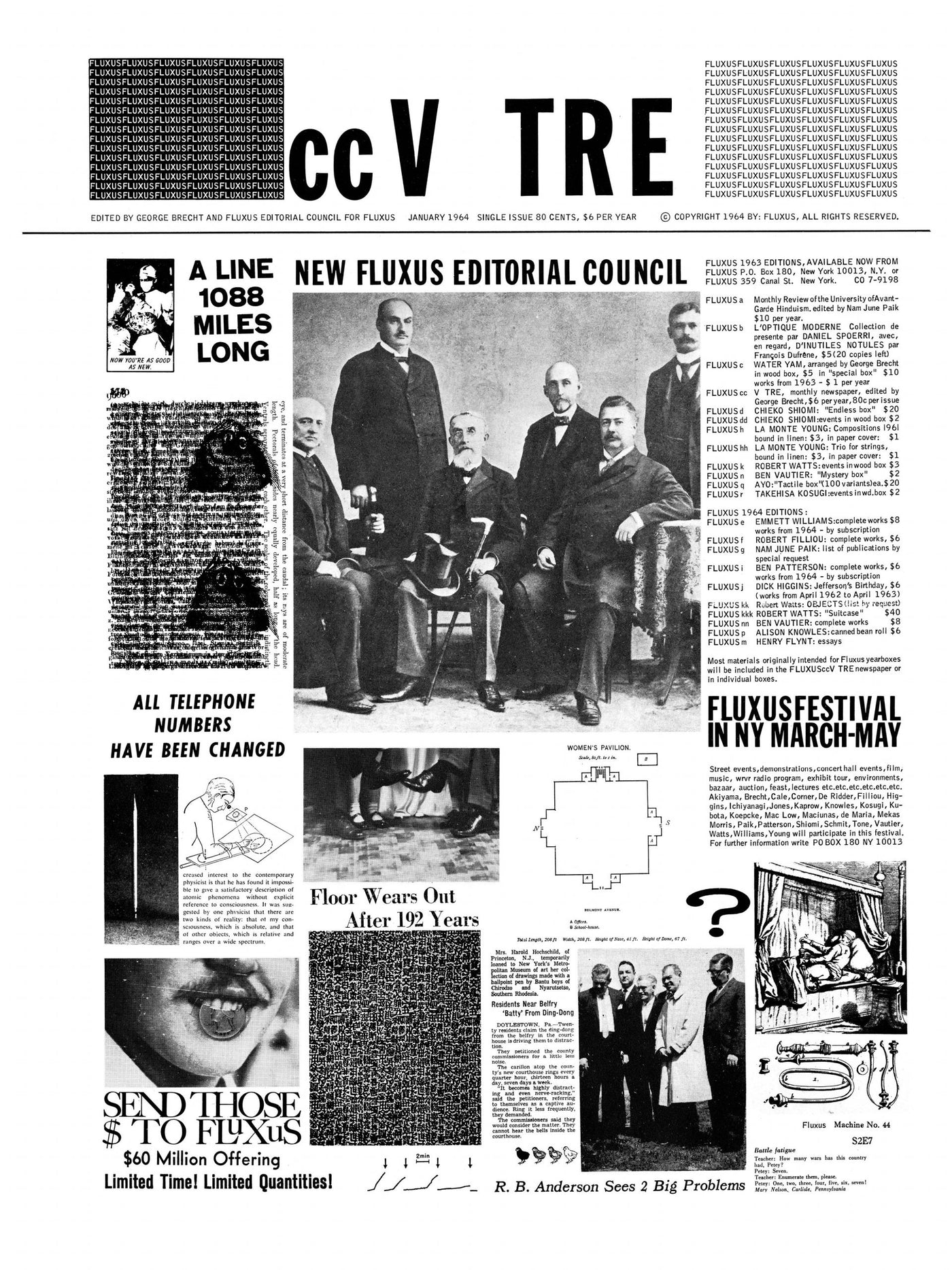The Fluxus newspaper
Sorry, this title is currently out of stock. If you would like a copy please contact mail@donlonbooks.com
Publisher: Primary Information
Year: 2024
Format: Softcover
Edition: First Edition
Condition: New
The Fluxus Newspaper collects all eleven newspapers published by the Fluxus art collective between January 1964 and March 1979. The newspapers were edited by an ever-changing team of artists known as the Fluxus Editorial Council for Fluxus and every issue, except the last two, was designed by Fluxus founder George Maciunas.
Although published irregularly, the newspapers were used to promote Fluxus events and publications, especially the group’s famous multiples and Fluxkits, with advertising materials, order forms, and pricelists interspersed throughout. More than just a space for promotion and information, the Fluxus newspapers featured the work of over sixty artists as well as appropriated newspaper headlines, advertisements, articles, and comic strips that are indicative of the group’s anti-art sensibility and characteristic humor.
Issues of the newspapers were originally designated as cc V TRE after the earlier, one-off publication V TRE, which artist George Brecht released on occasion of the Yam Festival (1963). The use of “cc” in these early issues indicated that the publication was a copy of Brecht’s original version. After the first two releases, the editors started to play with various other titles containing “V TRE,” producing issues titled cc Valise e ThReE, Vacuum TRapEzoid, and Vaseline sTREet, among others.
The Fluxus Newspaper is exemplative of the “do-it-yourself” creative attitude characteristic of Fluxus––an approach that is collaborative, interdisciplinary, anti-commercial, humorous, and open to anyone. The periodical is also an early example of the artist newspaper, a medium which grew out of the underground press movement and flourished in the late 60s and 70s as artists began to seek new mediums for presenting and distributing their work.
Artists featured in The Fluxus Newspaper include: Ay-O, Carol Bergé, Joseph Beuys, Elaine Bloedow, George Brecht, Christo, Philip Corner, Walter De Maria, Willem de Ridder, Bern Erismann, Nye Ffarrabas [participating as Bici Forbes], Robert Filliou, Henry Flynt, Ken Friedman, Carolyn Krumm, Heinz Gappmayr, Eugen Gomringer, Raymond Hains, Dick Higgins, Geoffrey Hendricks, Jon Hendricks, Alice Hutchins, Tatsu Izumi, Ray Johnson, Joe Jones, Allan Kaprow, Milan Knížak, Alison Knowles, Arthur Köpcke, Takehisa Kosugi, Ruth Krauss, Philip Krumm, György Ligeti, George Maciunas, Angus MacLise, Jackson Mac Low, Larry Miller, Peter Moore, Hans Nordenström, Yoko Ono, Nam June Paik, Benjamin Patterson, James Riddle, Dieter Roth, Takako Saito, Mieko Shiomi, Tomas Schmit, Daniel Spoerri, Christer Strömholm, Yasunao Tone, Stan VanDerBeek, Ben Vautier, Jacques Villeglé, Wolf Vostell, Yoshimasa Wada, Robert Watts, Emmett Williams, William S. Wilson, La Monte Young, Marian Zazeela.
Fluxus was a loose international collective of artists, poets, and musicians with a shared impulse to challenge the existing conventions of art making and propose a model of how art could be part of one’s life. After a series of year-long festivals in Europe between September 1962 and Summer 1963, Fluxus established its headquarters in downtown New York, and soon developed offshoot centers across the United States, Latin America, Europe, and Asia. George Maciunas acted as the spokesperson of the collective from 1962 until his premature death in 1978. He coined and employed the term Fluxus to describe the collective’s wide range of activities, including performances, concerts, publications, multiples, and the founding of collective live/works spaces for artists (Fluxhouse Cooperatives) inter alia.
